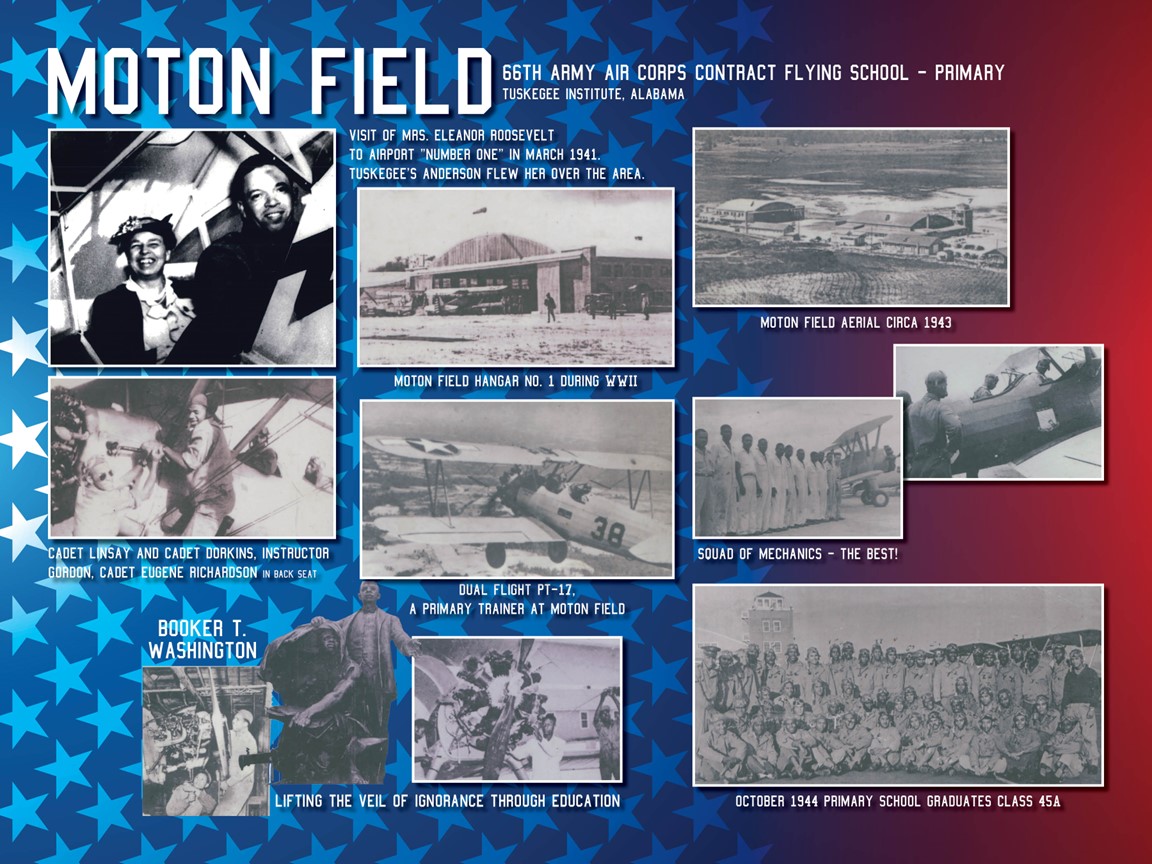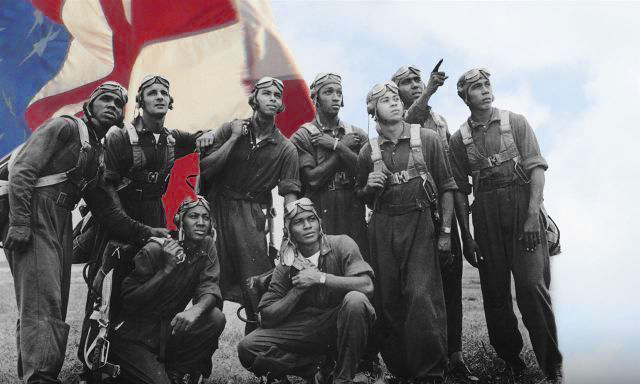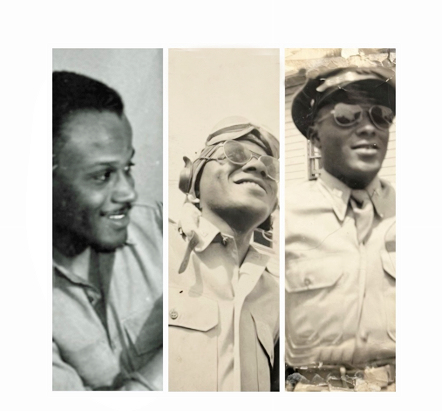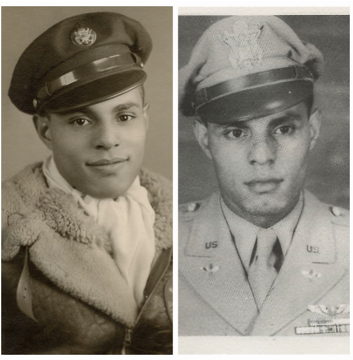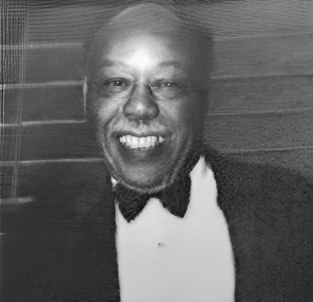historical highlight
The Flight that Changed History
This month we celebrate the “Flight of Eleanor Roosevelt and Charles A. Anderson” at Tuskegee on April 22, 1940.

WE ARE TAI PHILADELPHIA
Explore Our Services, Visit our history
The Tuskegee Airmen were credited with the following:
– 1578 combat missions
– 179 bomber escort missions
– Destruction of 262 enemy aircraft
– Destruction of 950 rail cars and other motor vehicles
According to Wikipedia
The Tuskegee Airmen were credited by higher commands with the following accomplishments:
- 1578 combat missions,[80] 1267 for the Twelfth Air Force; 311 for the Fifteenth Air Force[81]
- 179 bomber escort missions,[48] with a good record of protection,[78] losing bombers on only seven missions and a total of only 27, compared to an average of 46 among other 15th Air Force P-51 groups[82]
- 112 enemy aircraft destroyed in the air, another 150 on the ground[48] and 148 damaged. This included three Messerschmitt Me 262 jet fighters shot down
- 950 rail cars, trucks and other motor vehicles destroyed (over 600 rail cars[48])
- One torpedo boat put out of action. TA22 was an Italian World War I-era warship (Giuseppe Missori), that had been seized by the Germans and put into service. It was attacked on 25 June 1944, and damaged so severely she was never repaired. She was decommissioned on 8 November 1944, and finally scuttled on 5 February 1945.[83][84]
- 40 boats and barges destroyed[48]
Awards and decorations included:
- Three Distinguished Unit Citations
- 99th Pursuit Squadron: 30 May – 11 June 1943, for actions over Sicily[citation needed][85]
- 99th Fighter Squadron: 12–14 May 1944: for successful airstrikes against Monte Cassino, Italy. The first two Distinguished Unit Citations received by the 99th Fighter Squadron were awarded to the groups to which the squadron was attached. At the time, when a group received the honor, it was shared with the squadrons the were assigned or attached to the group.[citation needed]
- 332nd Fighter Group (and its 99th, 100th, and 301st Fighter Squadrons): 24 March 1945: for a bomber escort mission to Berlin, during which pilots of the 100th FS shot down three enemy Me 262 jets. The 302nd Fighter Squadron did not receive this award as it had been disbanded on 6 March 1945.[citation needed]
- At least one Silver Star[citation needed]
- 96 Distinguished Flying Crosses to 95 Airmen; Captain William A. Campbell was awarded two.[86][87]
- 14 Bronze Stars[citation needed]
- 744 Air Medals[citation needed]
- At least 60 Purple Hearts[88]
Featured Airmen
Lt. Paul F. Keene, Jr. (1920-2009)
Lt. Paul Keene, Jr. was a Charter Member of the Greater Philadelphia Chapter of Tuskegee Airmen
Paul Farwell Keene Jr. was a Philadelphia-area artist and teacher whose work helped raise the visibility of Black American artists. As a self-described “abstract realist,” his story reflects both the accomplishments and the difficulties of African American artists in the 20th century.
Keene was born on August 24, 1920, in Philadelphia, Pennsylvania. He was the son of Paul F. Keene Sr and Josephine Bond Hebron, co-founder of the National Association of Negro Business and Professional Women’s Clubs, Incorporated. In 1944, he married Laura Mitchell, the great-great granddaughter of abolitionist John Pierre Burr. They resided in Warrington, Pennsylvania with their son and daughter.
Keene earned three degrees (B.F.A., B.Sc. Ed., and M.F.A.), and was also a member of the Omega Psi Phi fraternity.
During World War II, Keene served with the Tuskegee Airmen in the 332nd Fighter Group and attained the rank of lieutenant. Keene attended the Philadelphia Museum School of Art, the Tyler School of Art and Architecture, and the Académie Julian. He studied at the Academie Julian in Paris under the G.I. Bill. While in Paris, Keene was a founding member of Galerie Huit, a collective gallery for American artists. Keene exhibited with Picasso and Leger at the Salon de Mai and through Whitney Fellowships directed courses at the Centre D’Art, Port-au-Prince, Haiti between 1952 and 1954.
In 1952 Keene located to Haiti where he studied and taught under a John Hay Whitney fellowship. In 1954 he returned to the United States. He taught at Temple University’s Tyler School of Art, as well as the Philadelphia College of Art, where he taught until 1968. From 1968 through 1985 Keene taught at the Bucks County Community College, where he helped to establish a new art department.
In 1966 Keene painted a mural at the HBCU Johnson C. Smith University in Charlotte, North Carolina. In 1971 Keene created a relief installation for the Fifty Ninth Street Baptist Church in Philadelphia. He had a two-decade-long association with the Brandywine Workshop and was the recipient of their Van Der Zee Award in 1990.
Keene died on November 26, 2009, in Warrington, Pennsylvania.
His works are in collections at the Philadelphia Museum of Art, the Pennsylvania Academy of the Fine Arts,the African American Museum in Philadelphia, the Hampton University Museum in Virginia, the James A. Michener Art Museum., the British Museum in London, the James E. Lewis Museum of Art at Morgan State University in Baltimore, the Nigerian National Museum, the Pennsylvania State Museum in Harrisburg, the Dallas Museum of Art, and the Tucson Museum of Art, among others.
Keene’s work was also included in the 2015 exhibition We Speak: Black Artists in Philadelphia, 1920s-1970s at the Woodmere Art Museum.
Featured Airmen
Major Thomas Wilson Love, Jr. (1919-1991)
Major Thomas Wilson Love, Jr. (November 14, 1919 – February 15, 1991)
Class 46-A-SE, 03/23/1946, 02102098
Thomas Wilson Love, Jr., son of Thomas Wilson Love, Sr. and Nora B. Ross Love, was born on November 14, 1919, in Ardmore, Pennsylvania.
Thomas received all of his education in the public school system of Delaware County, PA. He graduated from Haverford High School. As a youth, he joined and became a faithful member of the Mount Calvary Baptist Church in Ardmore.
Thomas entered the United States Army in 1942, and later transferred to the United States Army Air Corp; he entered as a cadet at Tuskegee Army Air Field. He graduated with honors from one of the last classes of Tuskegee Airmen pilots and received his wings as a Second Lieutenant. He served at Fort Knox, Kentucky, where he was promoted to First Lieutenant, and in England where he was promoted to Captain. Upon returning from England, he joined the Air Force Reserves and was promoted to the rank of Major.
Thomas was united in holy matrimony to the former Mildred Dorsey, and this union was blessed with five children: Judith, Susan, Thomas, Brian, and Mark.
He studied drafting and later became employed by the General Electric Company as a draftsman, where he worked for thirty years. Thomas was also an artist and he loved to draw and paint, particularly nature scenes.
Thomas was active in the Boy Scouts of America, and served as Assistant District Commissioner. He was awarded the Arrowhead Honor by the Philadelphia Council. He was also a longtime member of the Greater Philadelphia Chapter of Tuskegee Airmen, Inc. where he was part of the Speaker’s Bureau that regularly presented at schools, churches, and businesses.
Thomas was a loving husband, father, and grandfather. He passed away on February 15, 1991. He is interred at Fernwood Cemetery at Fernwood, Pennsylvania.
Featured Airmen
WILLIAM M. BUSH (1921-2001)
(March 7, 1921-September 21, 2001)
William M. Bush was born in Philadelphia, PA March 7, 1921 to the late Gladys and William Bush. He was educated in the Philadelphia, PA and Virginia School Systems.
He enlisted in the Army at an early age and served in World War II for the three years. He served in the famed 301 Fighter Squadron and the 332 Fighter Squadron Group of the Tuskegee Airmen in foreign theaters in an unknown capacity. In warfare, a theater is an area in which important military events occur or are in progress.
After discharging from the army, he worked at a variety of occupations developing his talent as a carpenter. His artistry is displayed in many homes in the Philadelphia area. He continued to develop his skills in general contracting that allowed him to be a real estate investor and contractor.
He enjoyed skiing and was a loyal Eagles fan with seasonal tickets. He was also a member of the Tioga Golf Club. Other activities included the former Guys and Dolls Social Club and a lifetime member of the NAACP.
He was a loving husband to the late Edythe Ford Bush, a devoted father, brother, uncle and friend. He will be remembered by his sense of duty, sense of humor, and a positive attitude on life. He was indeed a Tuskegee Airman.
Featured Airmen
Wesley Carlton Walker (1919-2005)
(November 18, 1919-May 21, 2005)
T-136694 Dates of service: September 10, 1943 – October 29, 1945.
Wesley C. Walker was born to the late John W. and Mary A. Walker in West Philadelphia on November 18, 1919. Walker lived in West Philadelphia with the Montara Family, presumably with his aunt Bessie Montara.
He attended Overbrook High School and Temple University, where he earned a bachelor’s degree. Walker entered the service in Philadelphia in September 1943 and was discharged at the Mitchell Airfield in New York. While enlisted, he served as a Bombardier pilot with the famed Tuskegee Airmen. Additionally, he worked as a musician at Camp Lakeland in Hopewell Junction and played the piano and organ.
Walker’s family posthumously received his 2007 Congressional Gold Medal, which was awarded to honor his service.
Walker was involved in a car accident on August 4, 1949, but fortunately was unharmed. By 1950, both parents had died. He remained along with his cousin Frederick Montara in West Philadelphia. Sometime after 1950, he married Vera, and they were blessed with a daughter, Patricia Walker-Ellison. Later, he had two grandchildren.
Wesley C. Walker passed in 2005 in Yeadon, PA, in Delaware County. The Philadelphia Daily News reported his obituary on May 26, 2005.

